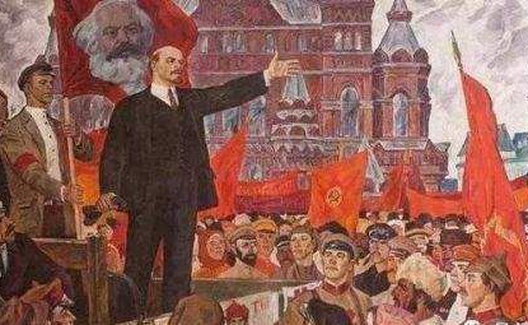 Nick G.
Nick G.VANGUARD - Expressing the viewpoint of the Communist Party of Australia (Marxist-Leninist)
For National Independence and Socialism • www.cpaml.org
The 1917 Great October Socialist Revolution was the result of the Bolshevik Party’s outlining for the Russian working class, its own independent class agenda, and doing patient mass work so that the Bolsheviks, as the vanguard of the working class, moved from a minority within the Petrograd Soviet to the majority.
Unlike the Mensheviks and Socialist-Revolutionaries, who held a majority on the Petrograd Soviet throughout most of 1917, the Bolsheviks absolutely refused to surrender the initiative to the parties of the capitalists and landlords (the Cadets and Decembrists) in the Provisional Government.
Australia in 2017 is obviously not Russia of 1917. We are not engulfed in the midst of a war between rival imperialist blocs; we do not have a semi-feudal landlord class and overwhelming numbers of impoverished and uneducated peasants; we have unpopular politicians, but not an autocratic Tsar; there is no unity between our workers and huge segments of the armed forces, with the latter sick of war and openly fraternising with “enemy” troops across the trenches; our workers do not have representative organs set to rival, and ultimately replace, the government of the capitalists.
In short, we are not in a revolutionary situation and the revolutionary movement is tiny.
But a revolutionary movement there is, and it exists to position the best elements of the working class within the unions and community organisations to offer conscious direction and purpose to otherwise spontaneous and fragmented groups engaged in struggles that ultimately share the common thread of anti-imperialist independence and socialism.
In Australia today, the independent working class agenda draws connections between workers’ immediate struggles for wages, conditions and the right to organise and strike, and capitalist class relations, the capitalist state, imperialism and imperialist wars. The independent working class agenda promotes the interests of the entire working class.
The legal basis for class struggle in Australia is severely circumscribed. It is illegal in all but the circumstance of enterprise bargaining, and then the right to utilise the strike weapon is blunted by a cumbersome process, and the “matters pertaining” to such industrial action is very limited.
Workers are no longer able to hold “sympathy” strikes - those expressions of class consciousness through which workers in industries not directly involved in a strike, nevertheless walked off the job to support their class brothers and sisters elsewhere.
Even the simple expedient of a picket line is under attack: we have to go through the pretence of a “community picket” to protect the union and its members from hefty fines and jail.
Most of the significant stoppages in recent times have been “breakout” strikes – defensive fightbacks against attempts by employers to lower wages and conditions. There are very few examples of aggressive attempts by workers to win newer and better conditions, or to smash through what has been, for several years now, an effective wage freeze.
It is true that some union leaders are prepared to push the envelope, but this rarely involves the patient education and long-term mobilisation of the membership; rather, there is the large-scale drawing down of union funds instead of the drawing in of members in struggle.
When union legal action over some issue is defeated (eg the recent decision by the Federal Court on penalty rates), there is no unleashing of the workers. Instead, union leaders vow to “continue the fight”, “continue to challenge”, “continue to speak out”. In other words, to continue to avoid direct action by the workers, and to keep on with the same old same old.
It is the less well-organised sections of the working class such as the hospitality industry with high turnover of labour and high casualisation that have been purposely targeted first by the ruling class to reduce wages through cuts to penalty rates. Combined with the anti-worker labour laws, organising and mobilizing of these workers in collective action in the workplaces against cuts to weekend rates involves slow patient mass work, not dissimilar to the decades-long struggle to organize non-trades production workers in the manufacturing industries in the 1940s and 1950s
We know that the correct approach is mass work with workers to patiently educate them in the necessity for their own independent class agenda, and their own struggle in support of that agenda. Lenin had no idea at the beginning of 1917, sitting in exile in Switzerland, that he would soon be back in Russia writing the April Theses and directing a revolutionary struggle for Soviet power. Nor is it given to us to know when and where, and in what form, a single spark might lead to a qualitative change in the consciousness of Australian workers and to their breaking through the legal restrictions on their ability to fight as a class against imperialism and its local hangers-on.
All we can say is that the time will come. Sooner or later, and preferably sooner, some event or incident or issue will cause such an upsurge of anger that the workers will not be able to be held back. Our task is to win their trust and assist them to put spontaneity on a firm, purposeful and conscious footing.